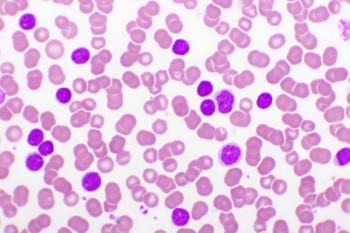
Racial Disparities Exist in Colorectal Cancer Deaths
Key Takeaways
- Racial and ethnic disparities in CRC mortality persist, with Black and AI/AN patients facing the highest risks despite overall care progress.
- Stage at diagnosis, treatment, and socioeconomic status explain some disparities, but unmeasured factors like structural racism also contribute.
Ongoing mortality gaps persist among Black and American Indian/Alaska Native patients with colorectal cancer, despite some overall improvements.
Despite national progress in
The cohort study is published in
“Persistent racial/ethnic disparities in patients with colorectal cancer, especially in AI/AN and Black [patients], call for new interventions to eliminate health disparities,” wrote the researchers of the study. “Our study provides vital evidence to address racial/ethnic inequality.”
A previous study published in
In the current study, the researchers utilized data from the Surveillance, Epidemiology, and End Results registry to analyze US patients diagnosed with CRC from 1992 to 2021.1 The aim of the study was to understand the trends over time and the factors contributing to racial/ethnic disparities in all-cause and cause-specific death. The researchers calculated the cumulative incidence of death by diagnostic period and cause of death to examine trends over time. Absolute disparities were quantified by measuring changes in the 5-year cumulative incidence of death across groups, while discrete-time models were utilized to estimate relative disparities and determine the extent to which factors such as stage at diagnosis, initial treatment, and socioeconomic status contributed to observed differences in mortality.
The study found that while the 5-year cumulative incidence of CRC and all-cause mortality among Black patients declined over time, both Black and AI/AN patients consistently faced the highest risk of death during the study time frame. Notably, the disparity in all-cause mortality between Black and White patients increased in 1992 to 1996 (adjusted HR [AHR], 1.14; 95% CI, 1.10-1.17) to 2017 to 2021 (AHR, 1.29; 95% CI, 1.23-1.35). When adjusting for stage at diagnosis, initial treatment, and socioeconomic status, these factors accounted for 46.5% of the Black-White disparity and 38.4% of the AI/AN-White disparity in all-cause mortality, indicating that additional unmeasured structural and systemic factors likely contribute to these persistent inequities.
However, the researchers noted some limitations. Despite efforts to quantify the contribution of factors such as stage at diagnosis, treatment, and socioeconomic status through mediation analysis, residual disparities remain unexplained, highlighting the influence of unmeasured variables, including structural racism, health care access, and quality of care. Additionally, limitations inherent to registry data, such as potential misclassification of race/ethnicity and lack of detailed information on comorbidities, patient preferences, and treatment adherence, may have affected the precision of the findings.
Despite these limitations, the researchers believe the study highlights the persistence of racial/ethnic inequities in patients with CRC, especially in Black and AI/AN patients.
“In summary, the largest racial/ethnic disparities in death among patients with CRC were attributed to stage at diagnosis and SES [socioeconomic status],” wrote the researchers. “Addressing the low utilization of cancer screening among racial minorities may be necessary to eliminate disparities. At the same time, the impact of SES on racial/ethnic disparities cannot be ignored, and this finding provides support for initiatives aimed at equalizing income and healthcare access among racial/ethnic minorities.”
References
1. Qi X, Wang H, Wang Y, et al. Racial/ethnic disparities in all-cause and cause-specific death among patients with colorectal cancer in the United States from 1992 to 2021: A registry-based cohort retrospective analysis. Soc Sci Med. 2025;377:118135. doi:10.1016/j.socscimed.2025.118135
2. Steinzor P. Ethnic disparities identified in colorectal cancer diagnoses, study finds. AJMC®. January 13, 2025. Accessed May 8, 2025.
Newsletter
Stay ahead of policy, cost, and value—subscribe to AJMC for expert insights at the intersection of clinical care and health economics.












































